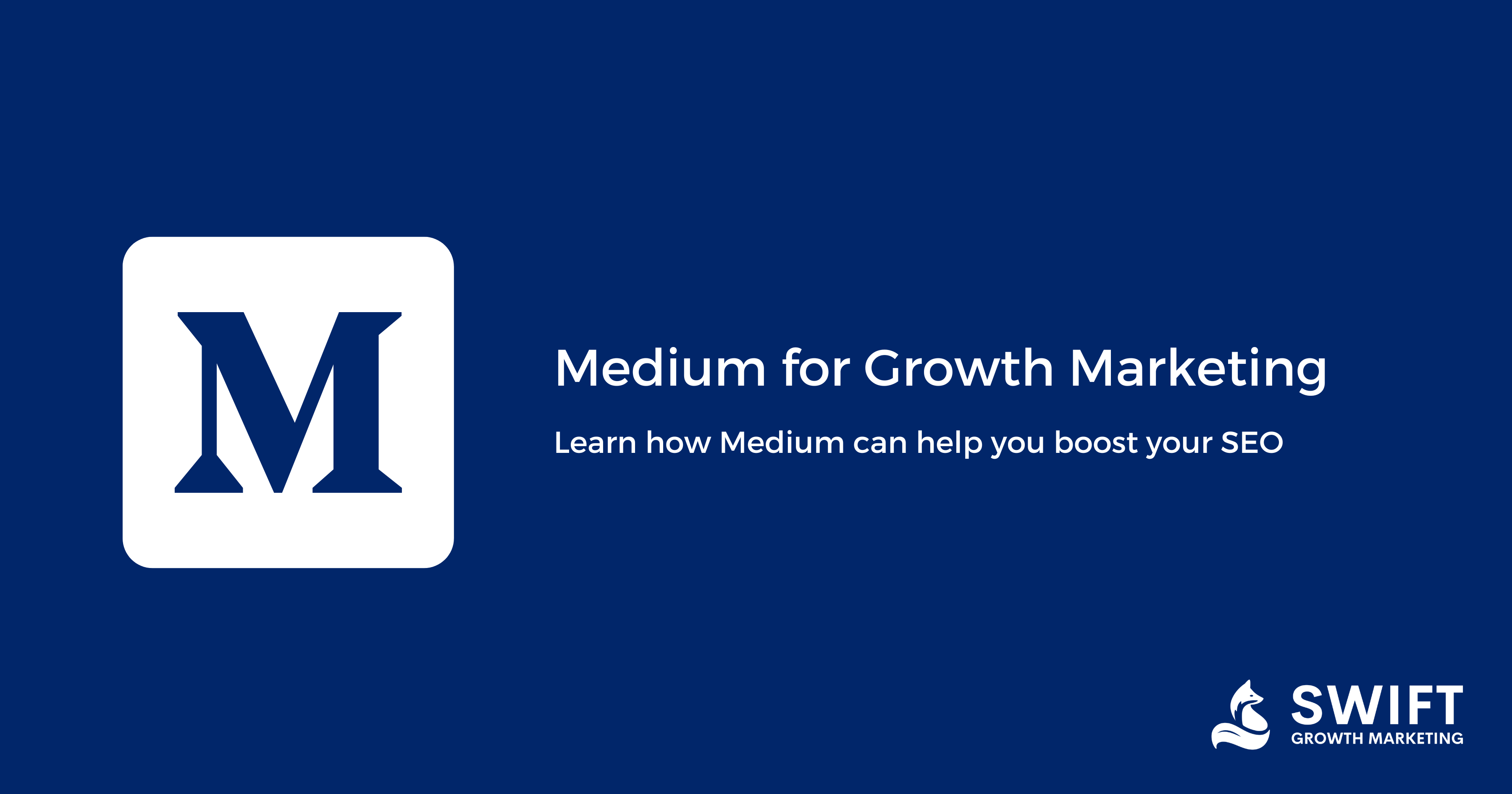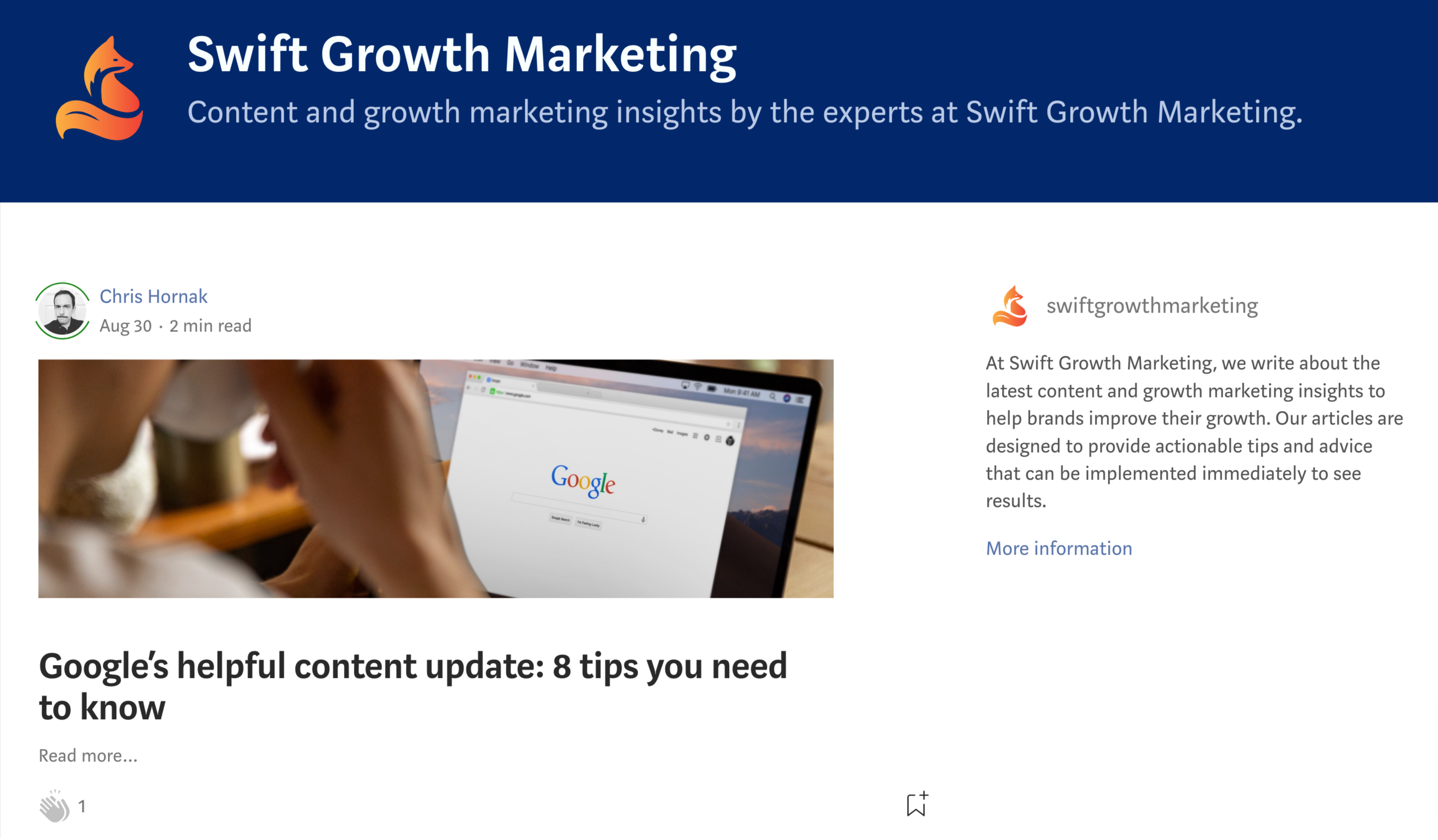
Medium is one of the fastest-growing publishing platforms on the internet, and it can be an excellent way to reach new audiences and grow your following. But did you know that you can also use Medium as part of your SEO strategy? Medium provides a lot of opportunities for content writers and publishers, especially when it comes to building links and driving traffic back to their own sites. In this article we’ll take a look at how using Medium can help boost organic search results as well as give us access to valuable backlinks over time.
What is Medium
Medium is a website where you can share your ideas, stories, and thoughts. It’s one of the biggest blogging platforms on the web. The company behind Medium is known as Obvious Corporation and was founded by Biz Stone (co-founder of Twitter), Evan Williams (co-founder of Twitter), and Jason Goldman.
The goal of Medium is to help writers find their audience while helping readers discover new content that they would enjoy reading. Some people might think that it’s just another blog but it’s so much more than that!
Why use Medium as part of your SEO strategy
You’re using SEO to drive new organic traffic and increase your brand awareness. Medium is a great place to do both, so it makes sense for you to use Medium as part of your SEO strategy.
- Medium has high domain authority: In 2018, the average DA for a website on Google was just 6 (out of 100). Even in 2014 it was only 8! By contrast, Medium has a DA of 96 — higher than most websites!
- Medium articles can rank very well because of Medium’s high domain authority: Because of this high DA, any articles you publish on Medium will be favored by Google’s algorithm over other sites with lower DAs. This gives you an advantage when it comes to ranking your content in search results and increasing traffic from search engines like Google or Bing.*
- Medium has a high level of engagement: The platform is designed around creating engaging content that readers love reading again and again. It’s also easy to share this content with others via social media networks like Facebook & Twitter
Ultimately, Medium is a good platform for publishing content because of its high level of engagement and DA. It’s a platform that’s made for SEO. If you’re looking to increase your site traffic and you want to take advantage of Medium’s unique features, start writing on the platform now!
Write Medium articles that tie back to your blog articles
When you write articles for your official website, make sure you’re building a strong foundation for future content. Make sure the information in your Medium article can be expanded upon in a blog post and vice versa.
For example:
- If your Medium article is about how to start an online business, link back to another post on your site that talks about what businesses need to do before they can start an online business.
- If you’re writing a listicle of 10 things on how people can learn programming, include links at the end of each point that lead back to articles on your official website where they can learn more about what those points are talking about (if there’s no obvious connection).
When you’re creating content, there should be a clear relationship between your pieces. In this way, you’ll build upon your existing website traffic and draw even more people to your content.
Even though Medium links are nofollow they can still provide valuable links
Medium links are nofollow, but they can still provide valuable links to boost your SEO performance and drive referral traffic. If you’re creating content on Medium, it’s important to link back to your official website. This is because the links are nofollow and won’t pass any SEO value by themselves. However, they do provide valuable referral traffic that can boost your overall performance in SERPs when third-party websites republish your Medium content.
When other websites republish Medium articles, those links are sometimes dofollow. This can help your domain authority, rankings and traffic. At the end of your article use the full URL of your website rather than anchor text so if the content is scrapped, the link will still work and pass link juice
Create a branded publication

One of the most effective ways to use Medium is by creating a branded publication, which will help you build brand awareness and increase thought leadership in your industry. Your organization’s Medium presence will also likely show up on the first page of Google results for branded searches, so when someone Googles your name or company name and clicks it, they’ll be able to see the great content that you’ve published on Medium.`
If multiple people in your organization want to publish this content, you can also have multiple authors contributing articles and further increase your search visibility.
Grow your Medium following
There are a few ways to grow your following on Medium. The first is by inviting people you know to follow your publication. You can invite up to 500 people per week, so use this feature wisely! Make sure the emails you use in this process are personalized and respectful of their time, giving them a reason why they should be interested in what you have to say.
Next, try using the “Follow” button on other relevant writers and publications in your field and ask for follows back when replying to their posts (if they don’t already follow you). This will help create more opportunities for readership growth. To make things easier, consider creating a list of people whose content would benefit from being shared with others in the industry or niche audience; it’ll make it easier for you when sharing articles later on down the line!
Make use of Medium tags

You can use tags on Medium to help your posts rank more easily in Google, but they’re also important for readers who are searching for specific topics. In fact, tagging your content allows you to reach new audiences that aren’t already following you on Medium.
Tagging allows readers to find relevant information based on their interests and browsing habits, making it easier for them to navigate the platform and find what they’re looking for. This can be especially helpful for brands looking to build an audience through organic discovery or ad spend strategies—it helps users discover your content even when they might not otherwise have done so through an editorial piece or another type of promotion.
Encourage comments
Medium is a great place to leave comments on other people’s articles, and that is one of the best ways to get more exposure on Medium. You can also use comments as a way to get feedback on your article. When you receive feedback and make changes based on it, this will help improve your SEO.
Commenting on other posts helps build engagement with readers who are interested in similar topics as you, which will help build loyalty for your brand and create opportunities for future conversations or business relationships.
Build an email list

You can build an email list using Medium’s built-in feature. There are three ways to capture email addresses:
- Direct people to your email sign-up page by adding it as an endpoint on your blog. This will make sure that you have a reliable way of capturing addresses from readers who want more from you, and it’s conveniently available at your Medium URL /subscribe.
- Ask for the address when someone visits the profile page for one of your published stories — see how Medium does this below? You can also add a field for subscribers in Settings > Account Settings > Manage Subscriptions + Forms (bottom right).
- Display a signup form underneath every piece of content that you publish on Medium (similarly to how publications do), which can help grow readership while also providing another channel through which they might reach out with questions or comments about what they just read!
Medium is a platform that gives you the option to easily capture email addresses from your readers. It comes at no cost, and its functionality is limited only by your imagination as a creator.
Share your Medium articles on social media
Now that you’ve written your article, you want to get the most value from it. So how can you use Medium for SEO? The answer is simple: share it on social media.
If you already have an established social media presence, great! Share your new article there. But if not, there are still ways to use Medium for SEO without spending a ton of time building up your following.
One trick is to link directly to the article in your bio section instead of using an image or video as a profile picture (this also makes it easier for others to find and read). If people like what they read, they will follow right back!
Promote your Medium publication on your website
The next step is to promote your Medium publication on your website. This is where you can leverage the power of cross-promotion:
- Include a link to your Medium publication in blog articles. Use the same anchor text for both links that leads people from one article to another, so it’s clear what each link will take them to (especially if there’s more than one).
- Consider embedding your publication on your website by adding an iframe or similar HTML code (you’ll need a developer for this). This will let people see an excerpt of what they’re missing when they don’t subscribe, while also giving them an easy way to subscribe if they find themselves captivated by the content and want more!
Just like with any part of growth marketing strategy, you should always be testing different things and measuring how they affect conversions before deciding which tactics are best suited for your brand. For example: Which links get opened most often? Which publications generate more requests for subscriptions? Do these changes correlate with increased revenue per visitor or average order value? These questions will inform future iterations of this strategy as well as other initiatives within digital marketing campaigns aimed at attracting new customers.”
Optimize your title and meta descriptions
When you write a post, make sure to include your target keywords in both the title and meta description. It’s also important that they are aligned with the keyword strategy of your site so that you don’t have any conflicts.
For example, if your target keyword is “Medium articles,” then it should be reflected in both places: The title should read something like “How to Write Medium Articles” and the meta description might read as follows:
“Writing Medium articles is an effective way to get your content in front of more readers. Learn how to write Medium articles with this guide.”
As you can see, having the right keywords in your title and meta description is vital to your Medium SEO strategy. Optimizing content for SEO ensures that it can show up at the top of search engine results pages for the proper searches.
Conclusion
Overall, Medium is a viable marketing tool that can help boost traffic to your website, while also increasing the number of people who subscribe to your email newsletter. Thus, the next time you are unsure of what content to write for your blog posts, consider writing a similar piece for Medium instead. If done right, the traffic it brings in could help grow your business and refine your SEO strategy.

